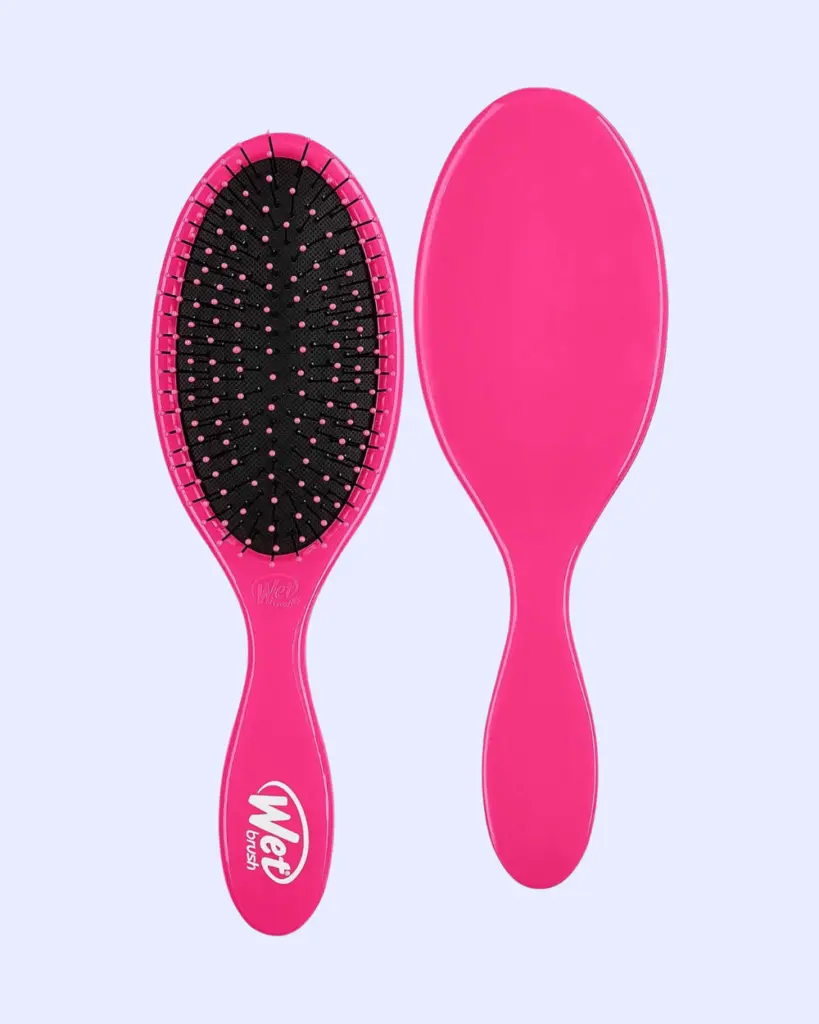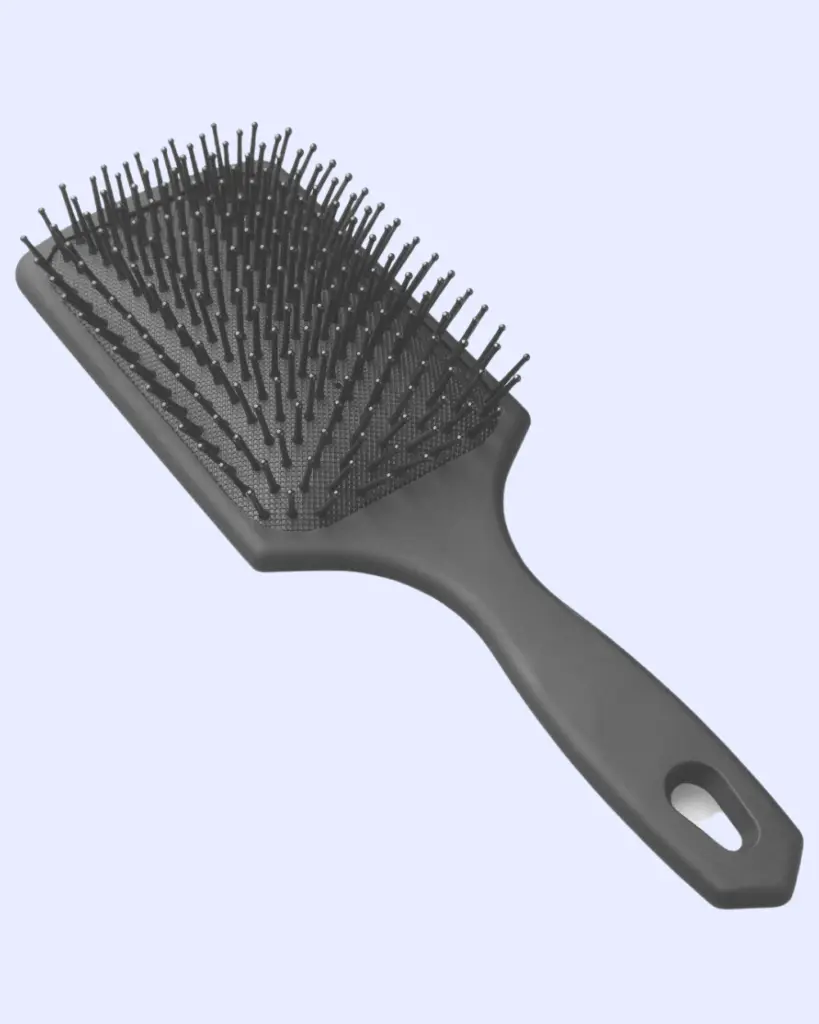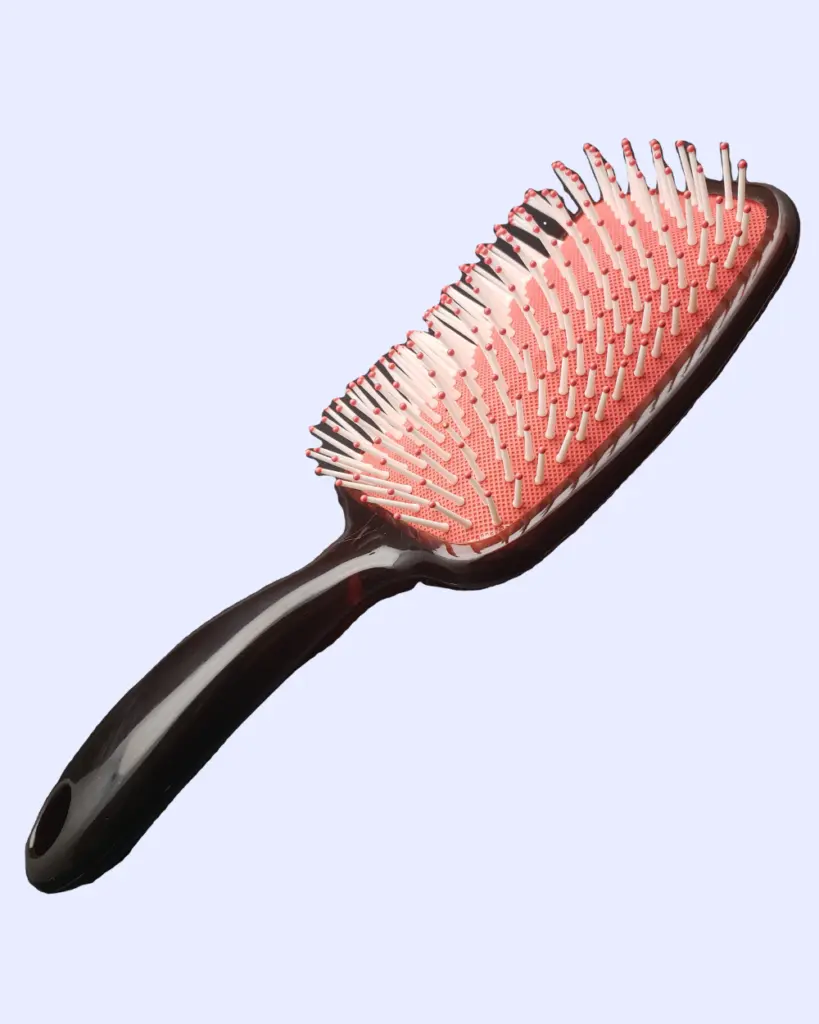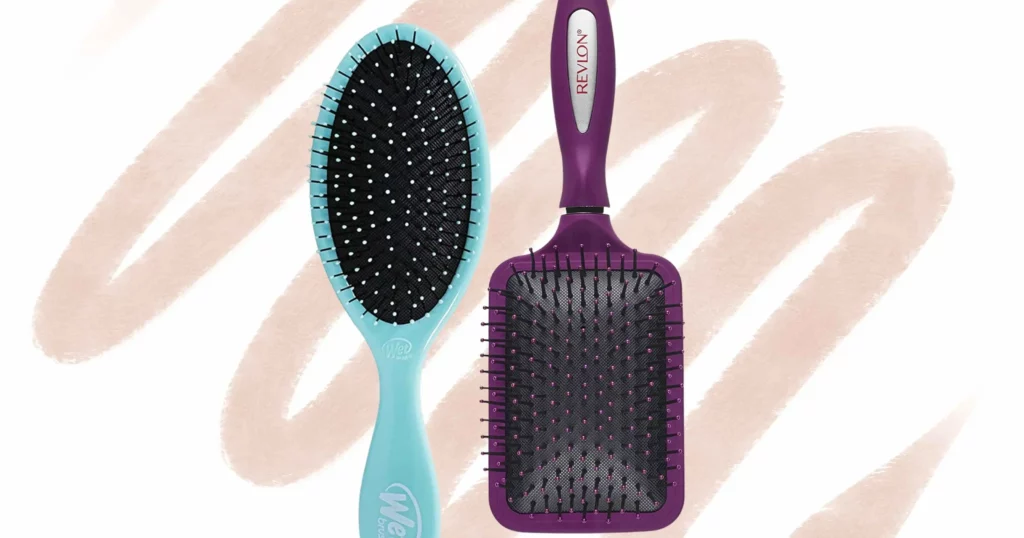Have you ever been told not to brush your hair while it’s wet? That’s because wet hair is incredibly sensitive and brushing it can cause damage and hair loss.
In order to provide a solution to this problem, wet brushes were invented for the specific purpose of being gentle to newly washed hair, so you don’t have to wait until your hair is dry and even more tangled before combing it out.
But is a wet brush really that much better than your trusty regular one? What makes wet brushes so special? Read to find out more in this wet brush vs regular brush review.
RELATED: 13 Types of Hair Brushes and When to Use Them
Wet Brush vs Regular Brush
There are many different brands that sell wet brushes, but the majority of people are familiar with the brand Wet Brush.
This company is a pioneer and arguably the biggest seller in the wet brush game. Along with the standard wet brush, they also have many different products for taking care of sensitive hair. There are brushes for styling and quick drying, sustainably-made brushes, exfoliating scalp massagers, and even brushes with your kid’s favorite cartoon character.
There are also other competitive brands like Crave Naturals with their unique handle design that many people say work better than Wet Brush.
Regular brushes have obviously been around forever, produced by countless brands and stores. There is no specific design to a normal brush, so they vary on looks and uses.
This review will largely utilize a standard paddle brush like those from Revlon or Conair to compare for consistency.
| Wet Brush | Regular Brush |
| –Can be used with wet hair –Made for detangling –Works with all hair types –Easy to find at any store or online retailer –Can cost between $5-20 depending on the brand and type of brush | –Hard to use with wet hair which can cause damage –Works with all hair types –Easy to find at any store or online retailer –Can cost between $5-20 depending on the brand |
Now that we’ve covered these basic points, let’s dive into more specific categories to see how these two kinds of brushes measure up.
Bristles
Wet Brush
Wet brushes usually have thin and flexible bristles that are firm and soft at the same time so that they are strong enough to separate tangles, but gentle enough to not create any breakage.

The Wet Brush brand in particular utilizes IntelliFlex bristles in their design in order to detangle easily and painlessly.
Regular Brush

Normal brushes from brands like Conair and Revlon still have soft tipped bristles, but are usually much thicker, which makes them better for tackling stubborn tangles rather than tending to delicate hair.
When to Use Each One
Wet Brush
A wet brush can be used on dry and wet hair, however, as the name suggests, it works the best with wet hair. This is because wet hair is very sensitive and more prone to breakage, so the thin bristles won’t pull too hard on your hair.

Normal wet brushes are meant to be used after a shower, but there are other types with thick rubber bristles that can be used while washing your hair. These help to apply your hair care products evenly and keep your hair from getting tangled in the shower.
Regular Brush
These brushes are more suitable for dry hair since they are not specifically made to be very gentle, which is needed for wet hair.

Most paddle brushes work best for people with thick hair because of the strength of the bristles and the wide surface of the brush.
Using regular brushes for dry hair helps to evenly distribute the oils that accumulate near your scalp throughout the rest of your hair. They can also be used to style your hair with tools like blow dryers and curling irons.
Pricing
Wet Brush
Most standard wet brushes cost around $6-8. The most common and well known brushes by the Wet Brush brand are the most affordable. There are other designs like the paddle brush, the speed dry brush, and more that vary in price, but generally stay under $10.

There are other brands like Crave and Tangle Teezer that are slightly more expensive, averaging between $12-$18 because of their more intricate designs.
Regular Brush
Normal brushes can cost anywhere between $5-$20, depending on the brand and their design. Standard plastic paddle brushes usually go for $5-$10.

There are other brushes that, for example, have special rubber handles or are made from wood or sold by professional hair styling brands that can cost more.
Quality
Wet Brush
Wet brushes, particularly from the Wet Brush brand, have received overwhelmingly positive reviews from customers on multiple platforms.

They have raved about how quickly these brushes can detangle wet and dry hair, and customers claim that they have used their brush for years.
Regular Brush
The quality of regular brushes really depends on what brand you purchase them from. For example, generic, drug-store brushes like those from Revlon and Conair have had mixed reviews. Some claim that their brushes broke and fell apart quickly while others say that they have been using these brushes for years.

Brushes with sturdier designs and materials that are usually a little more expensive have better reviews regarding quality and how long they last.
What Others Are Saying
Because these are two very large categories of hair brushes, there is a lot of information to cover. In case you needed more input before making you decision of which one to purchase, here are a few important points customers and reviewers have made online:
- Wet brushes are great for detangling without damaging hair
- Wet brushes can work on both wet and dry hair
- Wet brushes can be used with any type of hair
- Wet brushes are high quality for a cheap price
- Regular brushes can damage hair when wet, but works better when dry
- Paddle brushes are better for thick, straight hair
- Both are very affordable
In Conclusion
All in all, we would recommend a wet brush over a regular brush since wet brushes can accomplish virtually the same things and more.
Wet brushes aren’t just for wet hair, they last a long time, are gentle for all kinds of hair, and are no more expensive than a normal brush.
Of course, this all depends on what you are looking for, so if you need a brush specifically for styling or for detangling really thick hair, then maybe stick with a regular paddle brush. However, to get a more well-rounded brush, definitely go with a wet brush.

